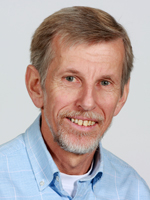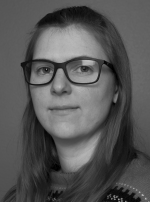Nettsider med emneord «Climate Change»
Climate Changes and Zoonotic Epidemiology in Wildlife Systems (ZEWS)
The FLUFFY project aims to accelerate stationary energy storage research by developing cathodes for advanced sodium-ion batteries.
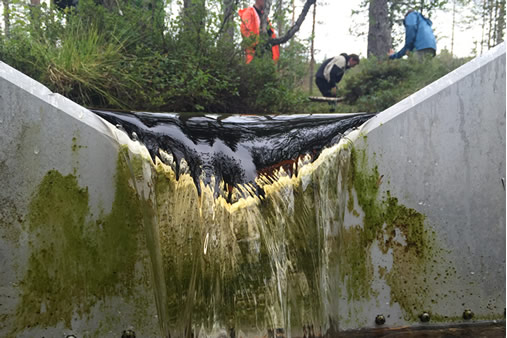
This project explores how climate change and other long-term environmental changes can influence the transport, uptake and food web transfer of mercury in boreal lakes.

Increased sea temperature due to climate change can influence the distribution, abundance and seasonal timing of zooplankton. Changing zooplankton dynamics might in turn impact the higher trophic levels, such as fish and seabirds, feeding on these animals. In a recent paper, we show that temperature variation in the Atlantic waters of the Norwegian Sea and Barents Sea might have stronger effects on the abundance of the younger than older development stages of Calanus finmarchicus, and that these stages might appear earlier in spring during warm years.
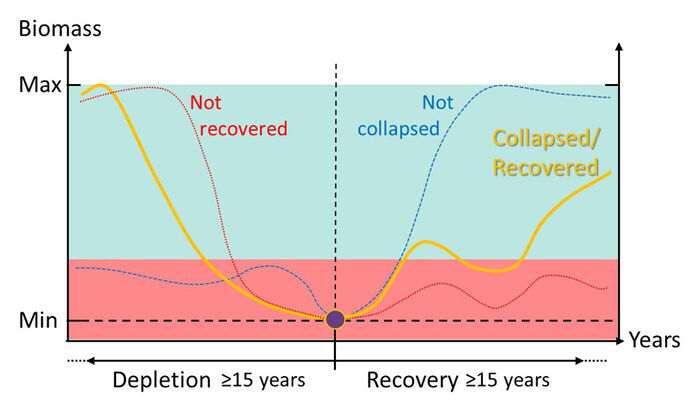
The worldwide human footprint is increasingly evident. Over the decades, many species have collapsed or are collapsing with only some recovering. A key question is what happens to these populations after the collapse. In a study published in Scientific Reports (Durant et al 2024), we test whether the effect on fish populations from overfishing, climate, and survival of young fish remains the same after a collapse.
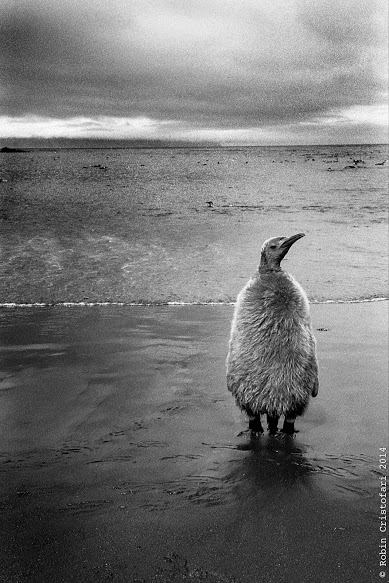
Seabirds in Polar Regions are experiencing increasing environmental stress due to climate change and pollution. They also serve as indicator species for changes in the environment. But what do they tell us about how seabird populations are affected by contaminants and climate, and is the situation the same in Antarctica as in the Arctic?
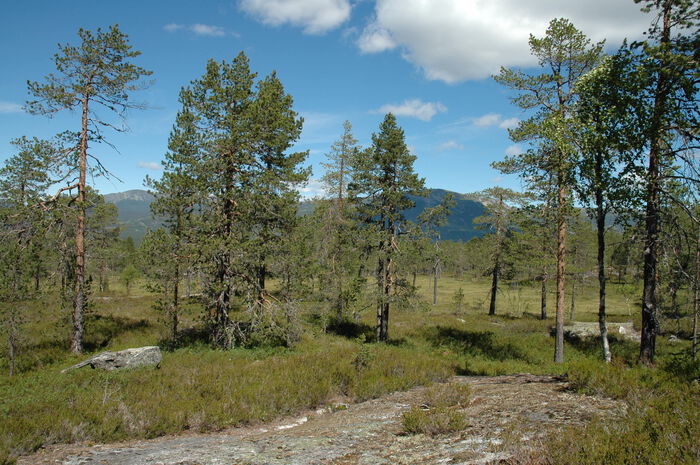
Lakes and rivers are the source of drinking water for most people in Norway, Sweden and Finland. Presently, climate change is posing a threat for the quality of drinking water sources. In recent years, concentrations of dissolved organic matter (DOM) in lakes and rivers have increased and associated with this, surface waters have become browner. This poses a major challenge to drinking water providers, as removal of DOM is a key step in drinking water treatment.
Both climate and atmospheric deposition are likely to blame for the brownification of surface waters. Brownification is expected to continue under climate change, but to what extent is unclear. Adaptation measures needed are likely to raise costs of water treatment and require long-term investments. In order to maintain good drinking water quality in the future, municipalities and other stakeholders urgently need science-based projections of raw water quality under climate change as well as information about the possibilities for, and costs of adaptation.
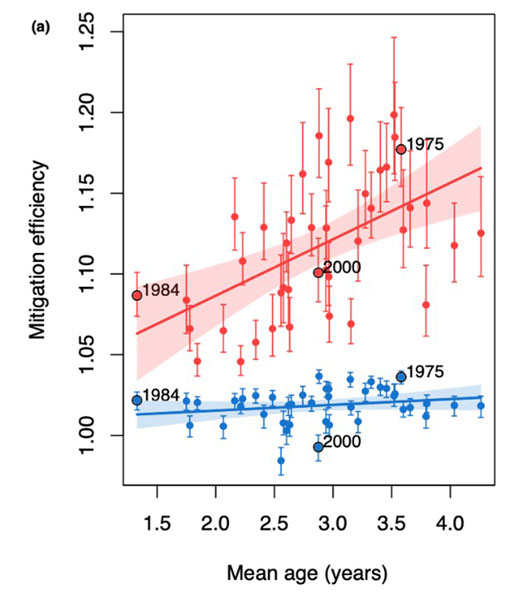
Climate change and increasing human activity are increasing risks of mass mortality events. In their recent study published in the Journal of Applied Ecology, Buttay et al. (2023) have focused on perturbations that could impact the early life stage of fish. Using the Northeast Arctic cod in the Barents Sea as an example, they evaluated different mitigation strategies alleviating the effect of such dramatic events on the population.
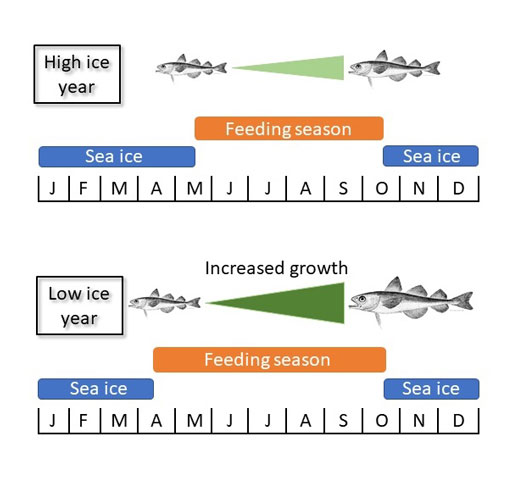
We studied the effect of changes in sea ice cover, sea temperature, and biomass of prey or predator on the length of polar cod. Our results show a significant negative effect of sea ice cover on length of all age groups of polar cod: Polar cod grow faster when there is less sea ice.

Surface waters in Scotland, as well as in southern Norway and southern Sweden have experienced a significant increase in NOM-concentrations and fluctuations over the last decades, likely due to the combined effects of climate variation and reduced acid rain.
NOM concentration levels and physiochemical properties vary significantly in space and time. Especially the seasonal fluctuations are site specific and therefore unique to any raw water source.
Surface waters are commonly used as raw water sources by waterworks for tap-water production in these countries. NOM in the water affect colour, taste and odour. Increasing concentrations of NOM, thus, causes increased demand for coagulant and disinfectant doses. NOM influences, furthermore, the stability and thereby the removal of inorganic particles and pathogens and increase the mobility of micro-pollutants. It fouls membranes, block filtration pores and compete for adsorption sites. In the water distribution networks, NOM influences on corrosion and leads to regrowth and biofilm formation during distribution, including house installations (e.g. problems with biofilm-amoebae-Legionella).
The increasing amount and variability of NOM concentrations and characteristics, thus, represents severe challenges for process control in water treatment and distribution systems.

The Perma-Nordnet research network aims to take on an important role in permafrost research, addressing the relation between thermal, bio-geochemical and hydrological processes. The task of the network is to initiate and catalyse such efforts, as well as to build, carry forward and tighten existing co-operations between the network members.
There are, unfortunately, no master projects available at this stage!
The project “Effects of Neonicotinoids and Temperature on Crop Pollination (NEOPOLL)” is a ~4 year Researcher project awarded Anders Nielsen (PI) over the Miljøforsk program at the Norwegian Research Council. The project started in April 2017. There are several master students involved in the project, investigating different aspects of how neonicotinoids affect bumblebee behaviour and colony development, but also more ecotoxicological approaches related to pesticide accumulation in nectar, pollen and bumblebees.
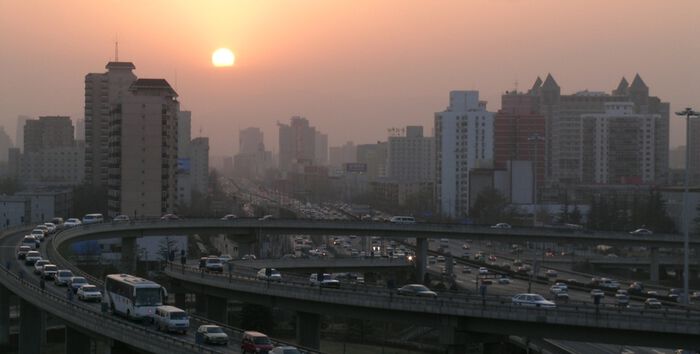
Climate and the effects of climate change present one of the greatest challenges of our time. It is a very broad research field which ignores the traditional boundaries between geoscience disciplines.
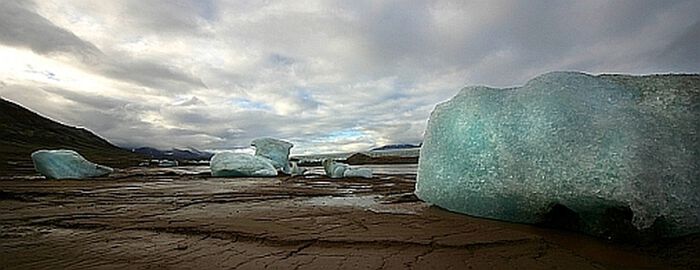
The Cryosphere includes all frozen water on the Earth's surface, all areas where snow, ice and permafrost affect the landscape and processes occurring there. We find a big amount of water tied up in glaciers and icecaps in Arctic and Antarctic, but also in permafrost and smaller glaciers worldwide.
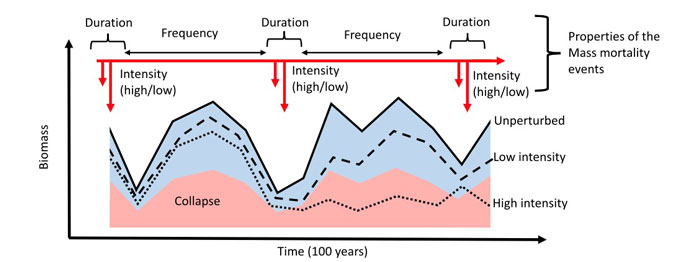
Extreme climate events, overexploitation and in general human activities can lead to a strong elevation of mortality, particularly for young and sensitive life stages. Such mass mortality events are predicted to occur more frequently. In our study published in Global Change Biology (Langangen & Durant, 2024), we recorded the chance of collapse of fish populations confronted to various levels and frequency of mass mortality events.
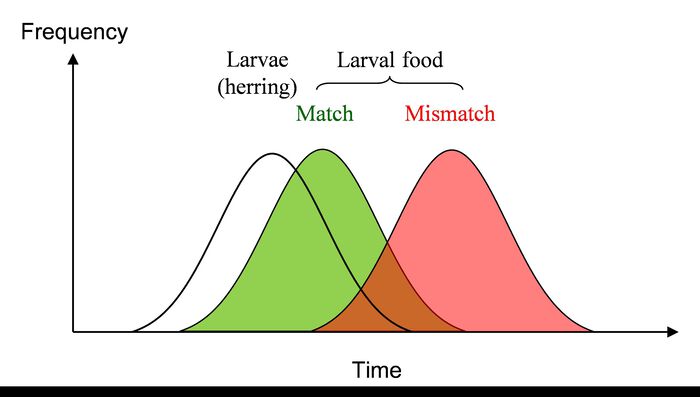
Climate change is thought to change many aspects of the marine life. Among others, one can mention changes in species distribution (immigration of species; new species coming to northern areas), the rate of development (warmer the temperature, the faster is the development), and change in the timing of the reproduction. The latter has recently caught a lot of attention around a nearly 50 years old hypothesis of the British fisheries biologist David Cushing.

Climate change, and especially alteration in sea temperature, is expected to have major effects on the distribution and abundance of marine fish. This is in particular the case in northern high-latitude marine ecosystems, where IPCC expects global warming to be especially pronounced.
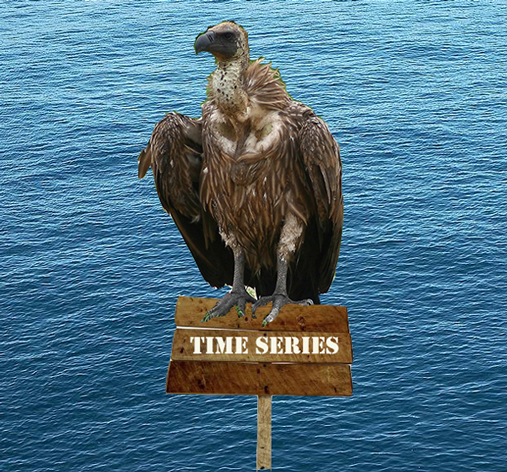
Some while ago a student asked us if we were collecting data in the marine ecological group at CEES. We were forced to acknowledge that we were not. From this follows a real cri de coeur: “but we are only scavengers!” Are we really? If we are, is it all bad?
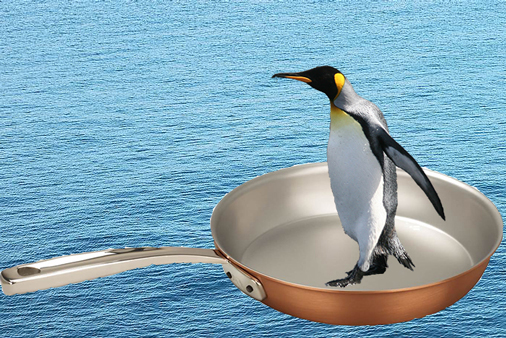
Penguins are highly visible species for the public. Their life has been portrayed in many movies. Unfortunately they are also species impacted by climate change. In a recent publication a team led by Charles Bost used long-term data to relate the large-scale climatic anomalies in the Southern Hemisphere to the foraging behaviour and population dynamics of the king penguin.

